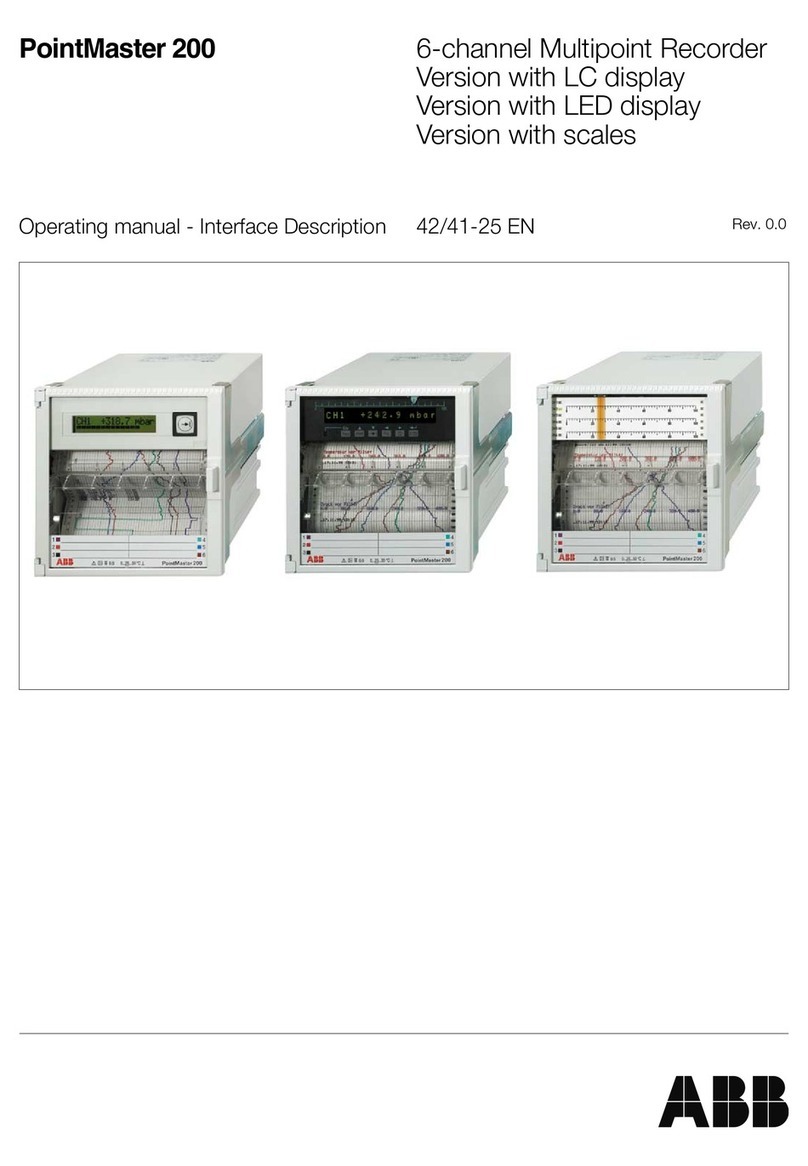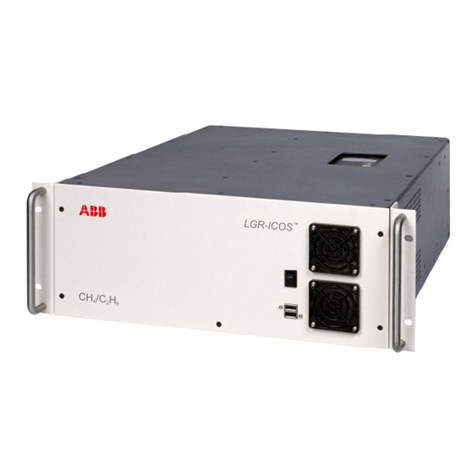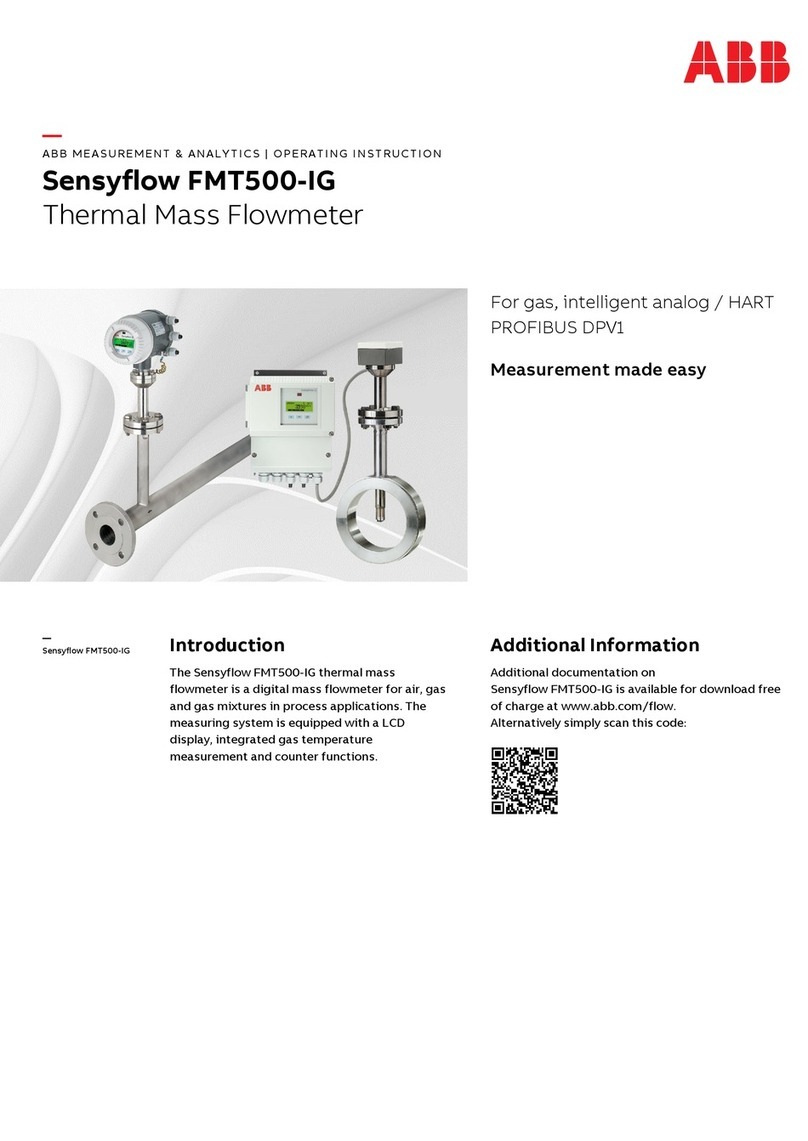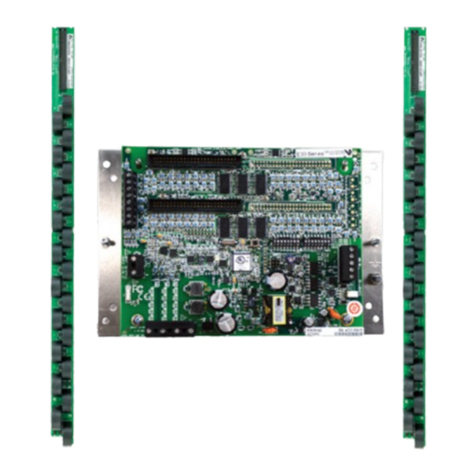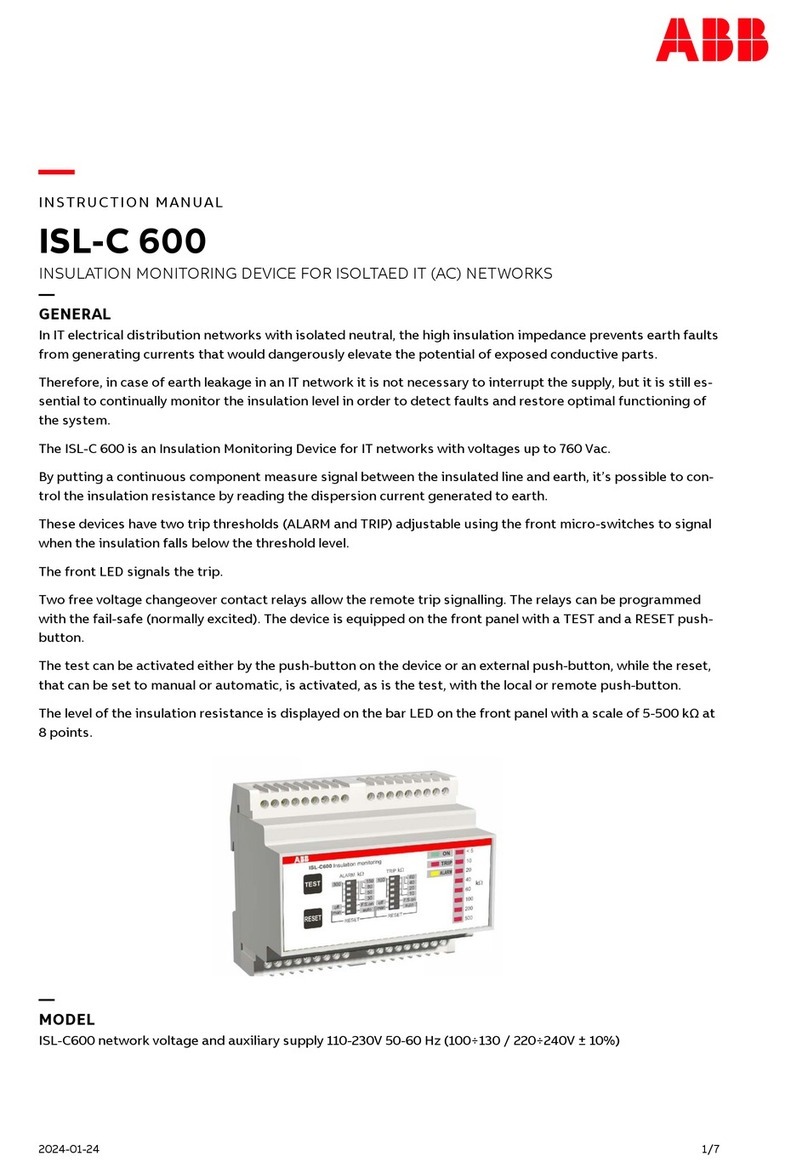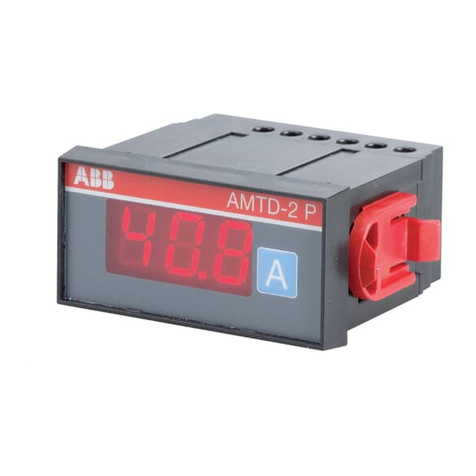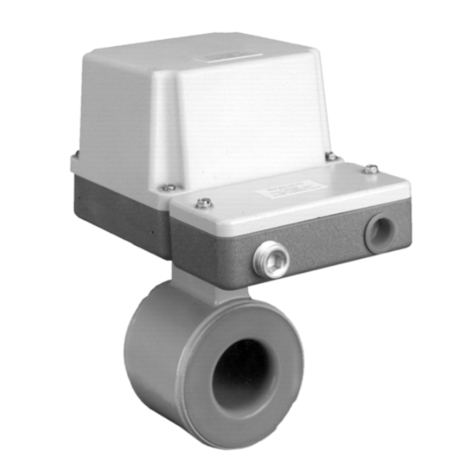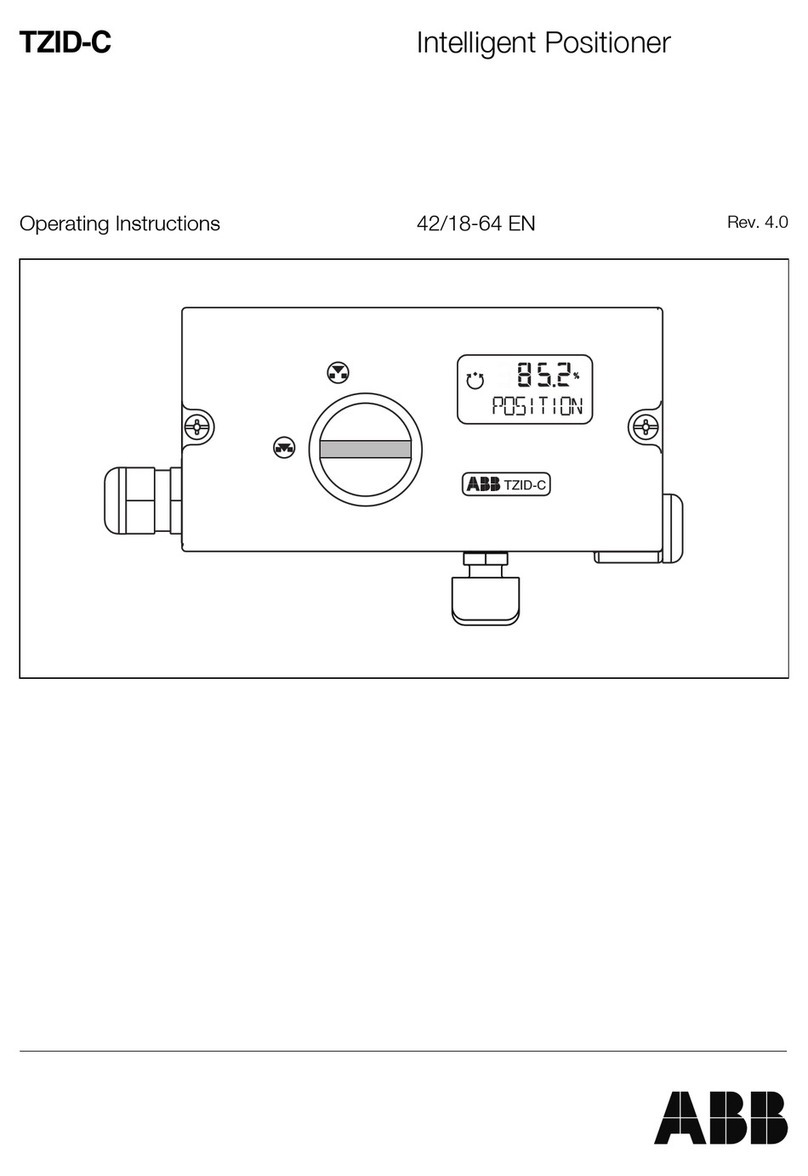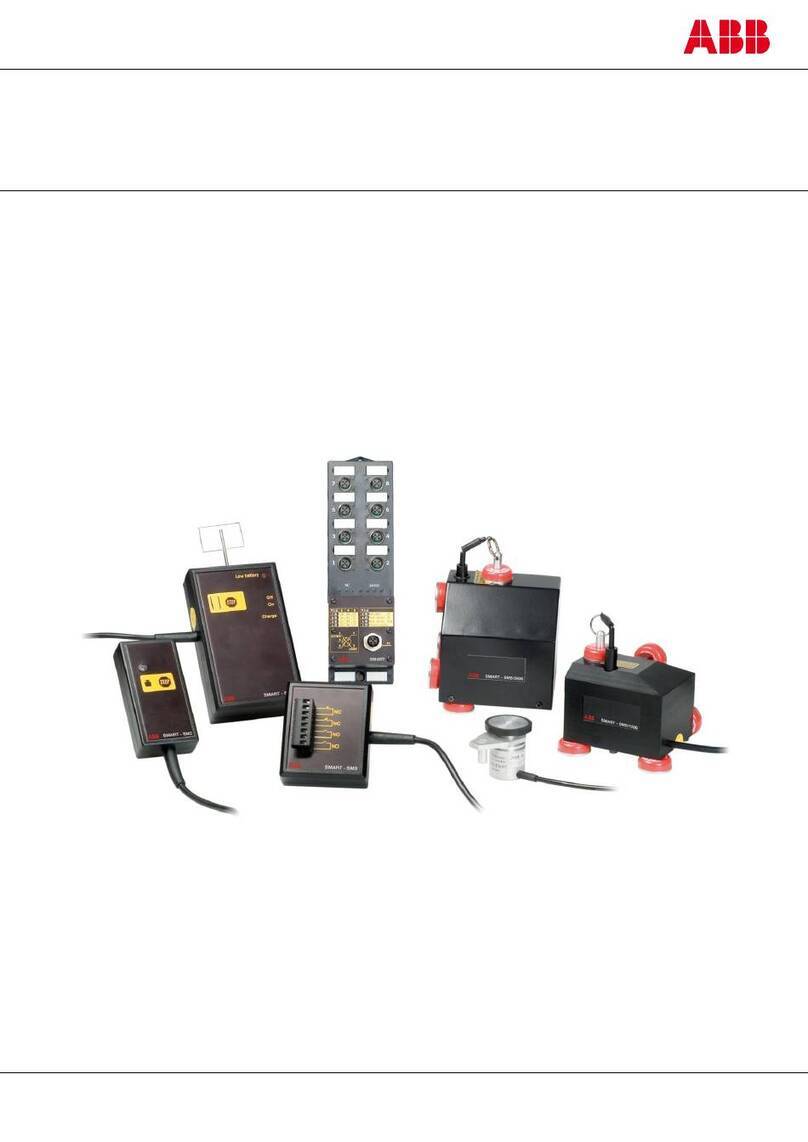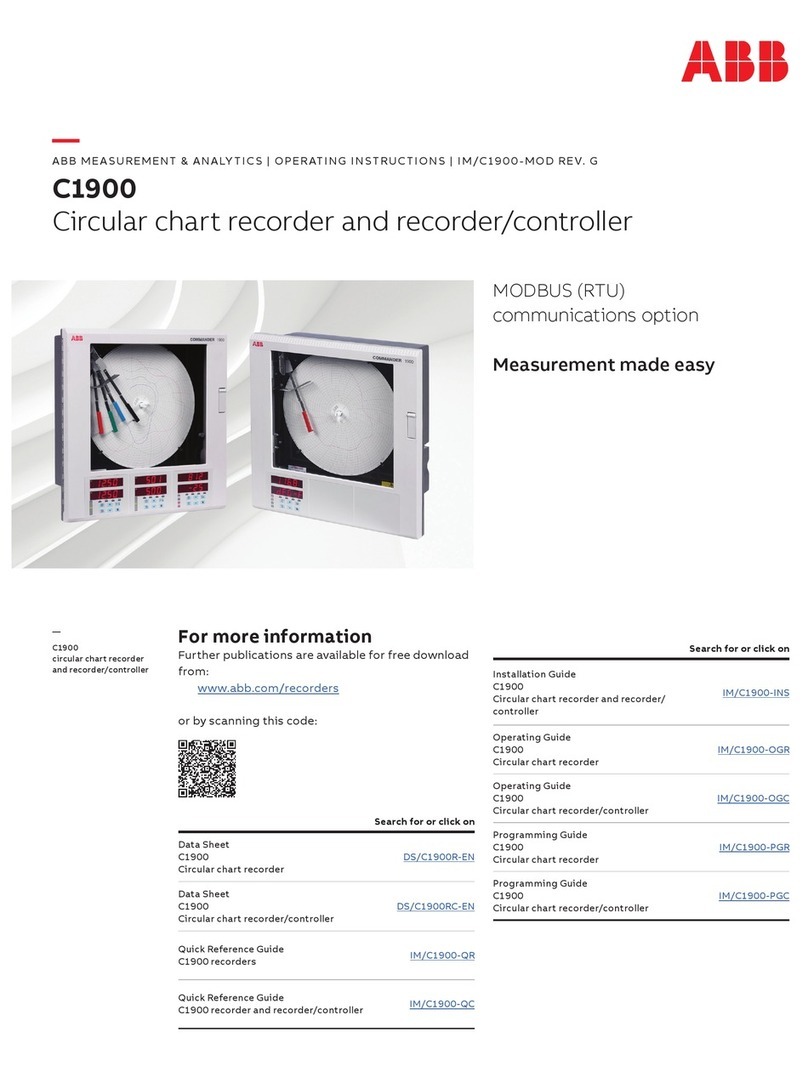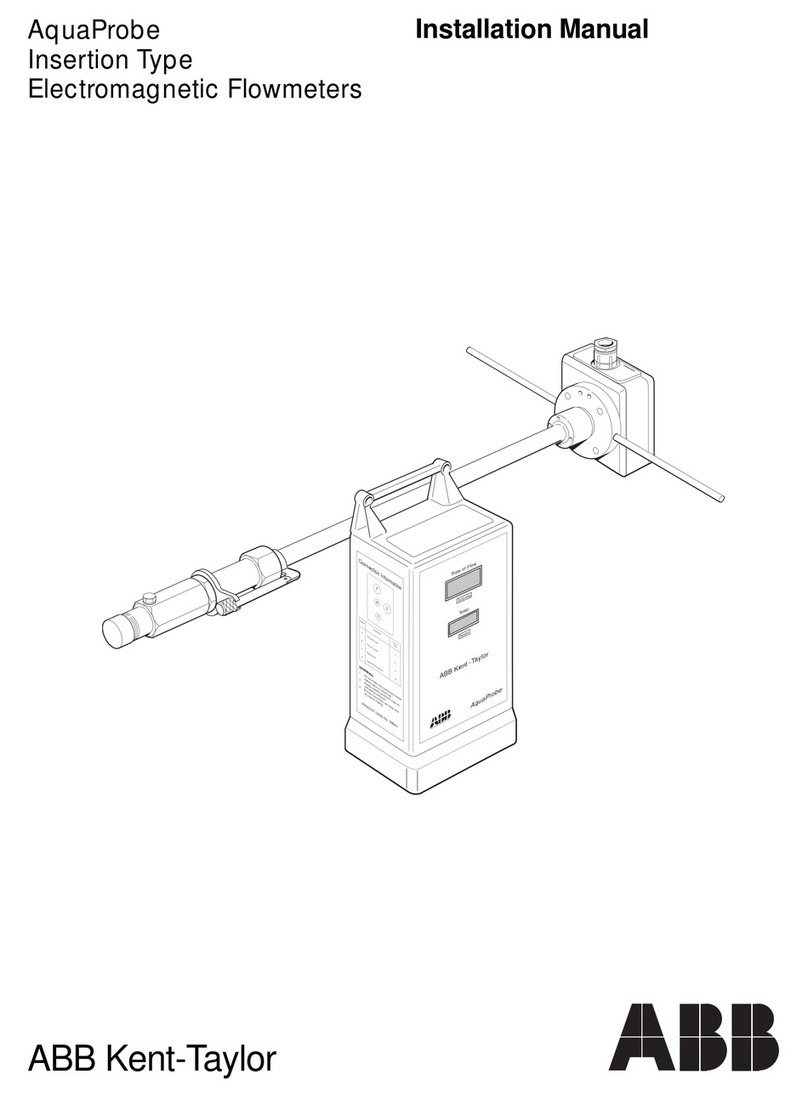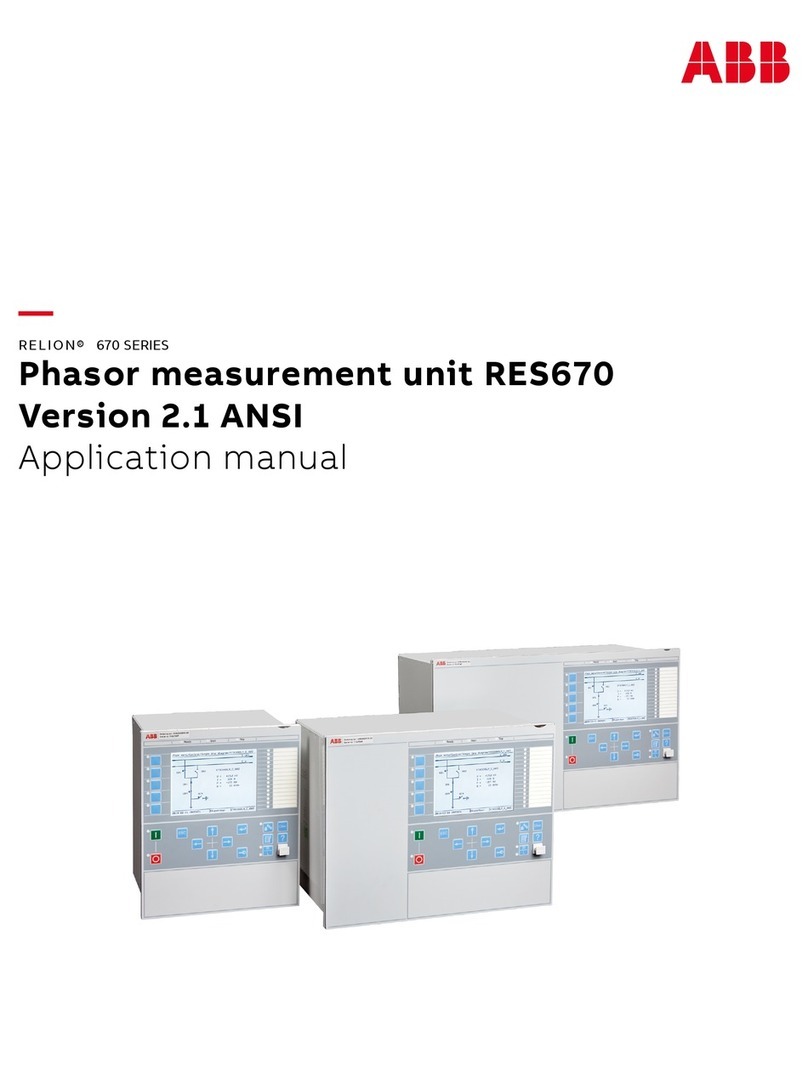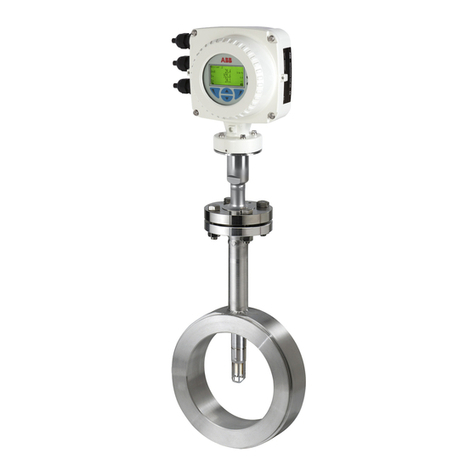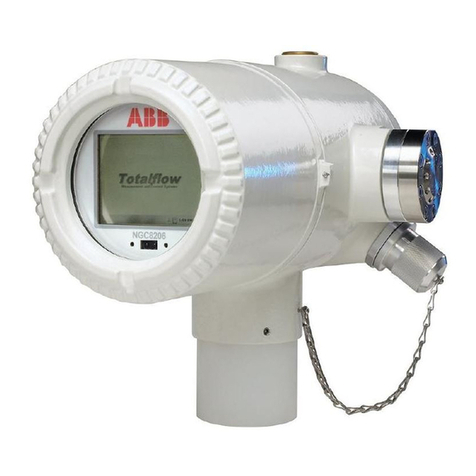
Voltage
Monitors
7.6 Low Voltage Products & Systems
1TRC 001 009 C0202 ABB Inc. • 888-385-1221 • Technical assistance 800-377-7722 • www.ssac.com
Accessories
Description
Preliminary Data Sheet - Available 1st Quarter 2008
The DLMU Series is a universal voltage, 3 Phase Voltage Monitor. It continuously measures the voltage of each
of the three phases with microcontroller accuracy and compares the value to preset trip points. It separately
senses Phase Reversal, Over, Under and Unbalanced voltages including Phase Loss and over or under frequency.
Protection is assured during periods of large average voltage uctuations, or when regenerated voltages are
present. The unit trips within 200 ms when phase loss is detected. Adjustable time delays are included to
prevent nuisance tripping and short cycling of sensitive equipment. The 10A isolated SPDT and 2A alarm output
relay contacts trip when a phase voltage exceeds the trip limits for the trip delay. Nominal line voltage, voltage
unbalance, and time delays are knob adjustable. The phase loss set point and the acceptable frequency range
are xed. Both Delta and Wye systems can be monitored; no connection to neutral is required.
Operation
Upon application of line voltage, the output is de-energized
and the restart delay begins. If all the three phase voltages
are within the acceptable range, the output energizes at
the end of the restart delay. The microcontroller circuitry
automatically senses the voltage range, and selects the
correct operating frequency (50 or 60hz). The over and
under voltage trip points are set automatically. When the
measured value of any phase voltage exceeds the accept-
able range limits (lower or upper) the trip delay begins. At
the end of the trip delay the output relay de-energizes. If the
phase voltage returns to an acceptable value before the trip
delay expires, the trip delay is reset and the output remains
energized. Under, over, and unbalanced voltages plus over
or under frequency must be sensed for the complete trip
delay before the unit trips. The unit trips in 200 ms when
phase loss or reversal are sensed. The unit will not energize
if a fault is sensed as the line voltage is applied.
Reset: Reset is automatic upon correction of the voltage
or frequency fault or phase sequence.
See accessory pages for
specications.
DLMU2BOP 12.11.07
Universal 3 Phase Voltage Monitor
DLMU Series (SPDT & N.O. or N.C.)
Motor Protector
Connection
3-phase fuse
block/disconnect
P/N: FH3P
2 Amp Fuse
P/N: P0600-11
ANSI Device #27/47/59
Ordering Table
Example P/N:
–U- 200... 480 V AC
–H- 500... 600 V AC
–A- Adjustable 2 ... 10%
Fixed: Specify Unbalance
2 ...10% in 1% increments
using two digits [ 04 ]
–A- Adjustable 1...30s
Fixed: Specify delay
1... 30 s in 1s increments,
using two digits [ 20 ]
DLMUBLAAA = 200 ... 480 V, SPDT & N.O., Lockout Function Delay, Adjustable Unbalance, Trip and Restart Delay
DLMUBRAAA = 200 ... 480 V, SPDT & N.O., Restart Delay on fault correction, Adjustable Unbalance, Trip and Restart Delay
DLMUCNAAN = 200 ... 480 V, SPDT & N.C., No Restart Delay, Adjustable Unbalance and Trip Delay
DLMUCL0420A = 200 ... 480 V, SPDT & N.C., Lockout Function, 4% Unbalance, 20 s Trip Delay, Adjustable Restart Delay
LED Operation
The LED ashes green during the restart delay, then
glows green when the output energizes. It ashes
red during the trip delay then glows red when the
output de-energizes. It ashes red/green if phase
reversal is sensed If a fault is sensed during the
restart delay, the LED will glow red during that
portion or the full restart delay.
LED Flashing Table
Output Restart Delay
–A- Adjustable*
0.6 ...300 s
–N - No Restart
Delay
–
B - SPDT & N.O.
–
C - SPDT & N.C.
Trip Delay
Restart Delay
Phase Reversal
120 FPM
60 FPM
120 FPM
Red
Green
Red/Green
ON/OFF
ON/OFF
Alternate
FPM = Flashes per minute
Line Voltage Voltage Unbalance
–L- Lockout,
Min Off Time
–R- Staggered Restarting
–N- No Restart Delay
DLM
Series
Restart Delay Options:
L= Lockout or minimum OFF time. The restart
delay begins when the output trips. The unit cannot
be re-energized until the restart delay is complete.
This provides a minimum off time or lockout time
to allow equipment sensitive to short cycling, time
to reset. If the fault is corrected after the restart
delay is complete the output energizes immediately.
The restart delay also occurs when line voltage is
applied/reapplied.
R= Restart Delay on fault correction. The restart
delay begins when line voltage is reapplied or
when a voltage fault is corrected. This option is
normally selected when staggered restarting of
multiple motors on a power system is required.
N= No Restart Delay. 0.6 second initialization
delay on application of line voltage applies.
Restart Notes:
All restart options remain reset when the following
conditions are detected:
1.) Phase Loss (phase unbalance greater
than 25%)
2.) Average Line Voltage less than 120VAC
3.) Phase Reversal
The restart delay begins when the condition is
corrected.
Protects Against: Phase
Loss, Phase Reversal, Over,
Under and Unbalanced
Voltages, Over/Under
Frequency
35 mm DIN Rail or Surface
Mounting
SPDT Isolated 10A Relay
Contact
N.O. or N.C. SPST Isolated
2A Relay Contact
LED Indicates: Relay, Faults,
& Time Delays
Universal Line Voltage
240 ... 480 V AC in One Unit
600 V AC Version Available
3 Wire Connection for
Delta or Wye Systems
ASME A17.1 rule 210.6
NEMA MG1 14:30, 14:35
IEEE C62.41-1991 Level B
Approvals:
DIN rail P/Ns:
017322005
Restart Function Trip Delay
XXXXXX
Note: * Selection
“A” is only
available for L
or R restart
functions
L1, L2, L3 = Line Voltage Input
NO = Normally Open Contact
NC = Normally Closed Contact
C = Common, Transfer Contact
CAUTION: 2 amp max. fast acting fuses are
recommended to protect the equipment‘s wiring.
They are not required to protect the DLMU.
! = Select alarm contact
connection as N.O. or N.C.
when ordering; N.O. Shown.
Dashed lines are internal
connections
